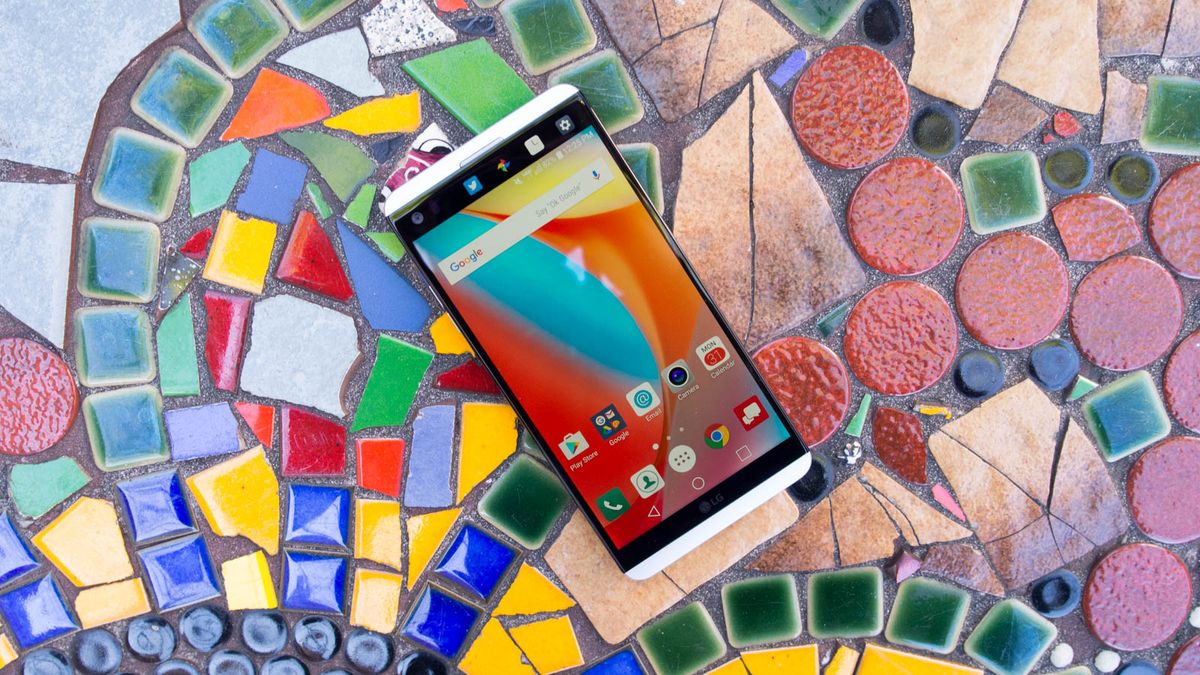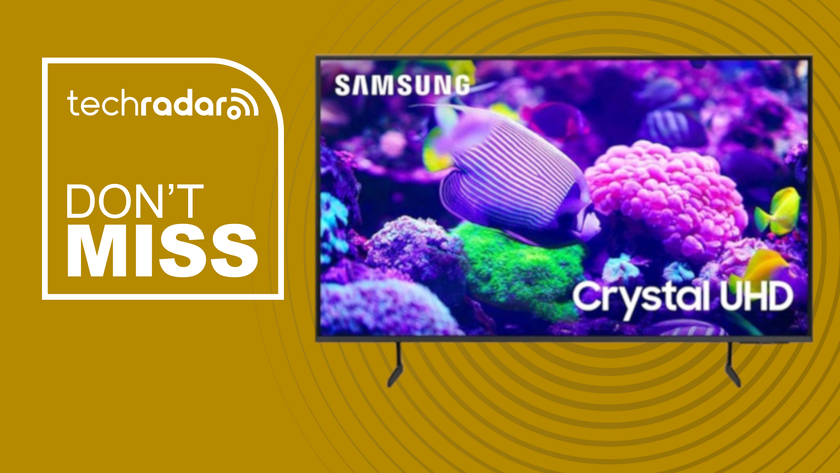TechRadar Verdict
There’s no contest: the LG V20 is the most feature-packed smartphone of the year. It’s a phablet that mostly nails the basics and adds on a ton of niche features, some of which you might not use all that much.
Pros
- +
Removable battery
- +
Wide-angle images never get old
- +
Audiophile-grade hardware
Cons
- -
Varying utility of second screen
- -
Just missed out on the Snapdragon 821
- -
Disappointing camera performance
Why you can trust TechRadar
Update: Sadly, the LG V20 never made its way to regions outside of the US. But there's finally a bit of good news if you were wanting to get your hands on one, or at least something like it.
LG is releasing the LG Q8 in European regions. It's a smaller, water-resistant version of the V20. It features the same innards, though strangely, it's said to cost nearly $700. Regardless, this novel device is finally making its way to new land.
Updated review follows below.
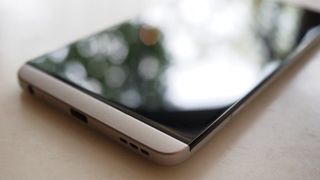
The LG V20’s greatest claim to fame is that it probably has whichever feature it is you’re looking for - and some that you didn’t know you wanted until now.
Like its predecessor, the LG V10, it’s a total Frankenstein of a smartphone. Around the body of the V20, you’ll find two screens, three cameras and an abundance of other awesome hardware and software features that you likely won’t find elsewhere.
Additionally, it offers the drop-friendly qualities of its predecessor that we loved, but replaces the rugged design that we didn’t love so much with a more refined look. Its signature second screen is back, too, with more options for customization than before.
For those looking for a capable Android smartphone, the V20 answers the call and sits comfortably in the league of some other powerful options out there, like the short-lived Samsung Galaxy Note 7 and even the iPhone 7 Plus. However, the new Google Pixel outruns the V20 with its Snapdragon 821 chipset.
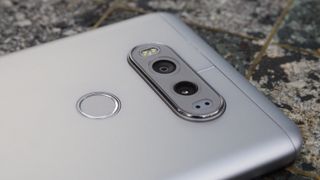
Weight: 174g
Dimensions: 159.7 x 78.1 x 7.6mm
OS: Android 7 Nougat
Screen size: 5.7-inch
Screen Resolution: 2,560 x 1,440
CPU: Snapdragon 820
RAM: 4GB
Storage: 64GB
Battery: 3,200mAh
Rear camera: 16MP+8MP
Front camera: 5MP
But outright comparing LG’s latest to more traditional smartphones is a bit unfair. After all, the V20 offers things that these phones, and many others, do not. Where else can you get a Nougat phone with a removable battery, four DACs, multiple wide-angle camera lenses and two displays - oh, and a 3.5mm port?
2016 was a strange year in smartphones, wherein flying with one of the most-hyped flagships was outlawed. We also saw options like the iPhone 7 and Moto Z lopping off the 3.5mm - a divisive move against the legacy feature that has turned away many.
So, it’s only fitting that the LG V20 - one of 2016's strangest phone in terms of its looks - is also one of the most inventive and feature-rich releases - even if it doesn’t quite stick the landing on some of its marquee features.
Price and release date
- The V20 retails unlocked for $799 (AU$1,099)
- Carrier promotions are a cheaper way of getting the V20
- The LG V20 is currently not available in the UK
The LG V20 is now available unlocked and can also be purchased through several carriers in the US, including Verizon, T-Mobile, Sprint, AT&T and US Cellular.
It costs anywhere from $28 to $33 a month on contract in the US, but can also be bought unlocked at full price for $799. That makes it one of the most expensive Android phones of 2016.
Purchasing the phone from a carrier might lock you in for a few years, but keep in mind that this is a global phone (supports both GSM and CDMA out of the box), and thus, barring any contract restrictions, you’ll be able to use it on most carriers around the world with no issue - even if the phone hasn't been released in your region.
As previously mentioned, the V20 retails unlocked for $799 (not available in UK, AU$1,099), but in many cases, buying it through a carrier is the cheaper option.
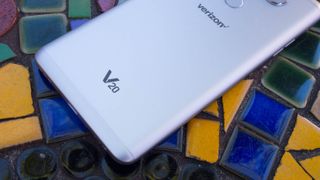
For example, Verizon is charging $672 unlocked or $28 per month. The carrier is also throwing in a $200 prepaid Visa gift card with purchase of the V20.
On AT&T, it will cost $829 unlocked or $27.67 per month. If you sign on with a 2-year contract via AT&T Next, the carrier will toss in an LG G Pad X 10.1-inch tablet.
While the carrier promotions do a lot to allay sticker shock for those who want the phone, LG is going a bit higher than the Google Pixel, which came under fire for its $649 launch price. For an extra $100, you can even nab Google's Nexus-killer upgraded to 128GB for $749 - still less than the V20 unlocked at most places.
Price aside, the two phones are more different than they are similar, so there's little reason to compare them too much. Still, Google just made it that much more difficult for LG to compete at a high price point.
Design
- The military-grade build is back and looking better than ever
- LG has made a whole lotta screen feel surprisingly compact
- Audience pleasers are here, like a removable battery and 3.5mm port
From a distance, the LG V20 doesn’t look all too different from the vast selection of flagship-quality Android smartphones out there. But, as you know, it’s the details that work to set a product apart from the rest. And this phone has a lot of them.
First off, the phone’s measurements come in at 159.7 x 78.1 x 7.6mm, and it weighs about 174g, which makes it a slimmer, lighter phone than the V10. Compared to the Google Pixel XL, which ranges in thickness from 7.3mm at its bottom to 8.5mm at the top, the V20 sits near the middle of that range, but weighs roughly eight grams more.
And just because LG got rid of the V10’s textured back doesn’t mean it’s any less resilient to drops. The V20 boasts a military-grade build and is made up of a removable aluminum back panel that yields a smooth look and feel (that’s right: swappable batteries, Samsung).
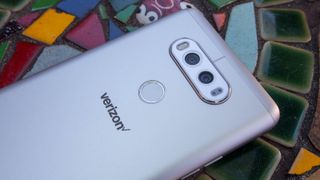
The top and bottom areas of the phone are made of silicon polycarbonate, a tough material that LG is confident can take more than a few blows. Now that we have a final retail unit in office, we’ve tried it ourselves and are pleased with the result. From a waist-high drop, the V20 landed face-first onto cement and surprisingly, it came away without a single blemish.
Like the Sony Xperia XZ, LG has once again combined the fingerprint sensor and power button into one. Just hold a finger up to the sensor to activate it. It might take a little getting used to, but the sensor/button combo is responsive, tactile to press and works just like Apple’s TouchID-enabled Home button - except it’s on the back of the phone.
You won’t find much on the phone’s top, other than the IR blaster, and a microphone that assist in capturing 24 bitrate audio at 48kHz - a mighty impressive feature for a smartphone and a testament to its knack for audiophilia.
On its bottom, you’ll find this year’s hottest talking point, the 3.5mm headphone jack, featured alongside a USB-C charge port, microphone and bottom-firing speaker. Lastly, its volume buttons sit slightly recessed into its left side and are distinguishable enough to feel without having to hunt for them.
At first glance, the LG V20’s screen is just as stunning to face head-on as the one found in the V10. That’s because its 5.7-inch Gorilla Glass 4-covered screen is still pushing a 2,560 x 1,400 (QHD) resolution with 513 pixels per inch (PPI), and stretches up to 5.9-inches of diagonal real estate once you add on the 160 x 1, 040 resolution 2.1-inch-wide second screen. If you’re used to a smaller phone, like the iPhone SE, this will be quite the adjustment.
Why didn’t LG opt for Gorilla Glass 5, as seen in the late Samsung Galaxy Note 7? No reason in particular was given, but LG stated that it made it a little thicker than normal to ensure its durability. Regardless, it has held up just fine during our testing.

The chin area of the bezel is just about the same size as it was in the V10, though more of it is glass this time, which offers nothing in the way of capacitive button hardware - just an LG logo. If anything, it makes the V20 look a bit more mature.
About that second screen
In case you’re unfamiliar, the LG V20 and its predecessor are in a class of their own: phones that have two screens. The main display operates as you’d expect, but the always-on second screen is reserved for notifications, quickly launching into your favorite apps, and showing extra bits of information, like the time and date. You can also toggle quick settings here, like turning on the flashlight, and customize the default signature to show a personal note, like a mantra or a reminder.
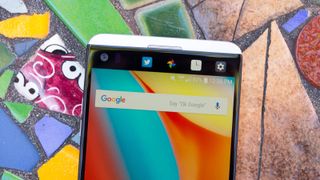
Improvements over the second sliver of screen found in the V10 are minor, but welcomed, and include brighter visibility at 68 nits (up from 35), as well as support for longer, scrolling marquee signatures. The V10 topped out at 14 horizontally-scrolling characters, but you can do more here.
Depending on the size of the font you choose and the length of the words, you’re looking at between 24 and 30 characters. That’s the difference between “Please buy gro” and “Please buy groceries! :)”. In addition, the second screen can be programmed to switch off and turn back on at user-specified times.
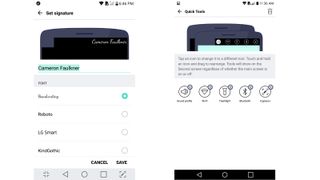
Being the first phone with Android Nougat pre-installed, the multi-window feature is the perfect compliment to the second screen. Now, you’ll be able to get even more work tasks done without an on-screen interruption, or enjoy a full-screened game without notifications getting in the way of the heads-up display.
The second screen might first seem like a gimmick, and your mileage may vary, but it’s truly handy to have a dedicated place to view essential info without popping out of an app, or even waking the phone, for that matter.
- Take a look at our LG discount codes for the best LG offers and savings.
Cameron is a writer at The Verge, focused on reviews, deals coverage, and news. He wrote for magazines and websites such as The Verge, TechRadar, Practical Photoshop, Polygon, Eater and Al Bawaba.
Most Popular






